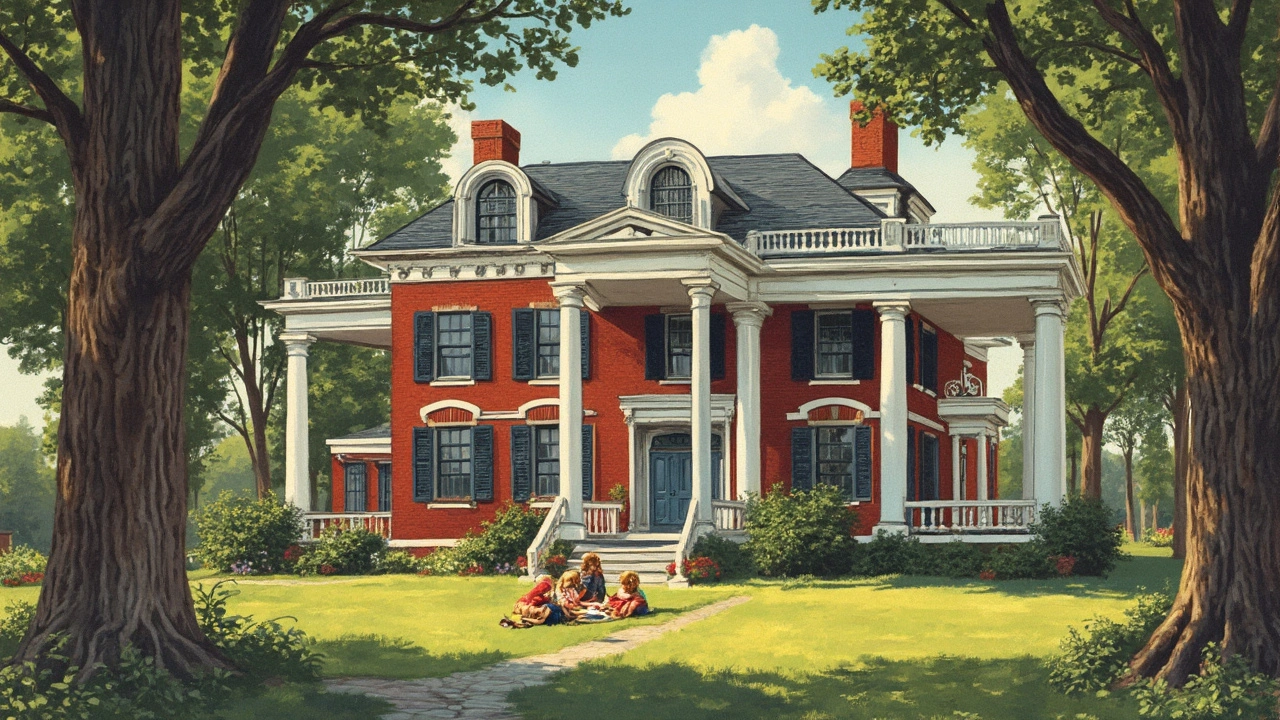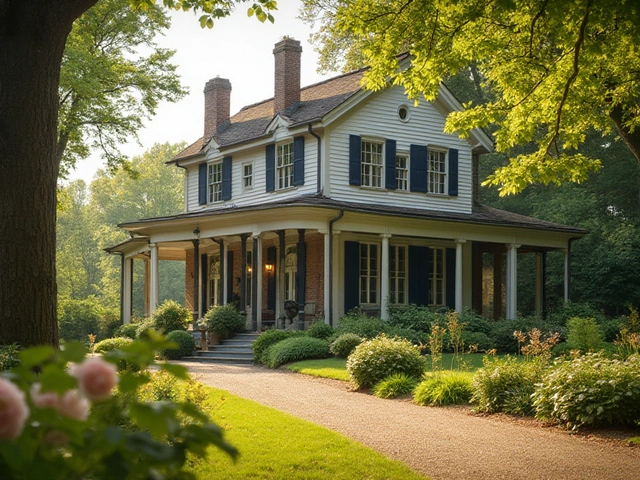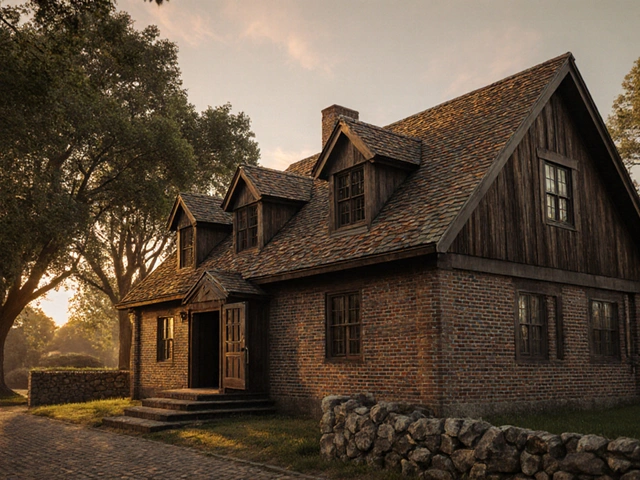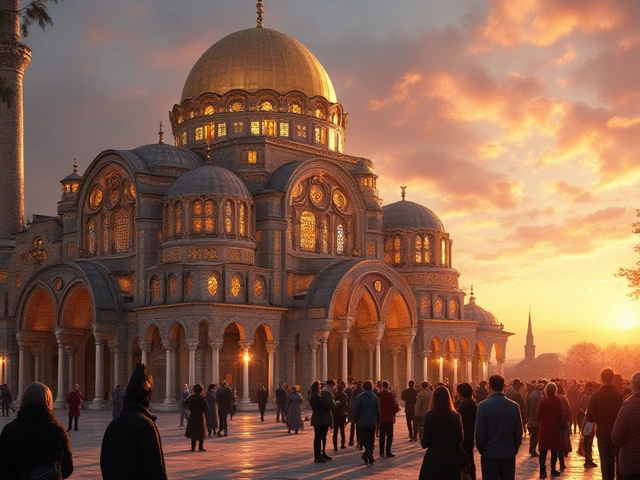So, Colonial Revival architecture—you might think it's just a fancy way of saying 'old-timey buildings,' but it's got a whole lot more going on. Picture this: America in the late 1800s, a nation racing towards modernity yet yearning for its origins. Enter Colonial Revival, a style that captured the heart of a budding nation clinging to its roots while embracing the new.
Imagine homes and public buildings with elements like gabled roofs and symmetrical front facades that echoed the country’s colonial past. But it wasn't just nostalgia for nostalgia’s sake. This style was all about weaving America’s founding stories into the architectural fabric, almost as if the nation was flipping through its history books with every new structure. From the White House’s little sister to quaint suburban homes, these designs embraced tradition while nudging towards innovation.
Why does this matter today? Well, besides the aesthetic charm, Colonial Revival played a huge role in the story America tells about itself. Each building is like a reflection of cultural identity, serving as a physical reminder of where the nation came from. This architecture turned into a kind of patriotic badge, something folks were proud to look at and live in. It’s like wearing your favorite band’s T-shirt—shows where you’ve been and who you are.
- Colonial Revival: A Return to American Roots
- Architectural Features and Innovations
- Cultural Impact and Significance
- Colonial Revival in Modern Times
Colonial Revival: A Return to American Roots
Colonial Revival architecture was like America looking back in time with a sense of longing. This movement popped up in the late 19th century, a period when the country was galloping towards modernization but still clung to its inception glory days. It's like the architectural version of a comeback tour for classic hits. The style emerged as folks wanted to rekindle that spirit of the colonial past, almost like grabbing a slice of history to blend with the bustling present.
Why did this happen? Well, the Centennial Exposition in 1876 in Philadelphia was a game-changer. People got to see replicas of historical colonial architecture, and nostalgia hit them like a freight train. This *Colonial Revival* craze became a massive hit in the styles of houses, public places, and even office buildings. Basically, anyone who was anyone wanted a dash of the historic U.S. flair in their space. It wasn’t just about appearances, though—it was about reawakening a national identity that seemed to be fading with industrial expansion and urbanization.
The architectural details were no less than a trip down memory lane. You'd have your symmetrical facades, gabled roofs, and dormers, all nodding to America's foundational styles like Georgian, Federal, and even Dutch Colonial. What’s cool is that this wasn’t some cookie-cutter imitation. Architects at the time started mixing old-school charm with modern convenience. So, you'd find Colonial Revivals paired with electric lighting, central heating, and indoor plumbing—stuff George Washington would've never dreamed of!
Even educational institutions embraced this architectural blast from the past. Yale and Princeton, just to name a couple, hopped on the Colonial Revival bandwagon, designing buildings that were meant to inspire and educate, all while surrounded by history-infused walls. Isn’t it fascinating how a style born out of longing for the past actually paved the way for the future?
Architectural Features and Innovations
Alright, let’s break down what makes Colonial Revival architecture so distinct. You'll spot these structures often with their simple, yet iconic features. It's like they've taken a peek at the past and finessed it for modern times. Think of it as a greatest hits album of early American architecture.
One of the standout elements you'll find is the strong focus on symmetrical design. Picture a home with a balanced front, often featuring a central door lined with evenly spaced windows on either side. It’s all about balance and proportion here. The entryways are dignified, typically flanked by columns that say, "Welcome, but make it elegant."
When it comes to roofs, Colonial Revival uses gabled and hipped styles. These aren't just for show—these roofs are practical, handling everything from rain to snow with ease. And let’s not forget about the dormer windows, adding character while lighting up the attic spaces.
Now, if you look down at the building materials, wood was often the go-to, but not exclusively. Brick and stone stepped in too, especially for more formal buildings like libraries or government offices. And the details—oh, those details—like decorative shutters and fanlights over the front doors, give these homes that extra touch of historic sophistication.
But here's where the innovation really kicks in. While this style recalls the past, it also embraces contemporary needs. Interior layouts became more open, reflecting a modern way of living even way back when. And as the style evolved, we saw an integration of more complex floor plans and the use of modern building technologies—kind of like updating your phone’s OS without losing your favorite features.
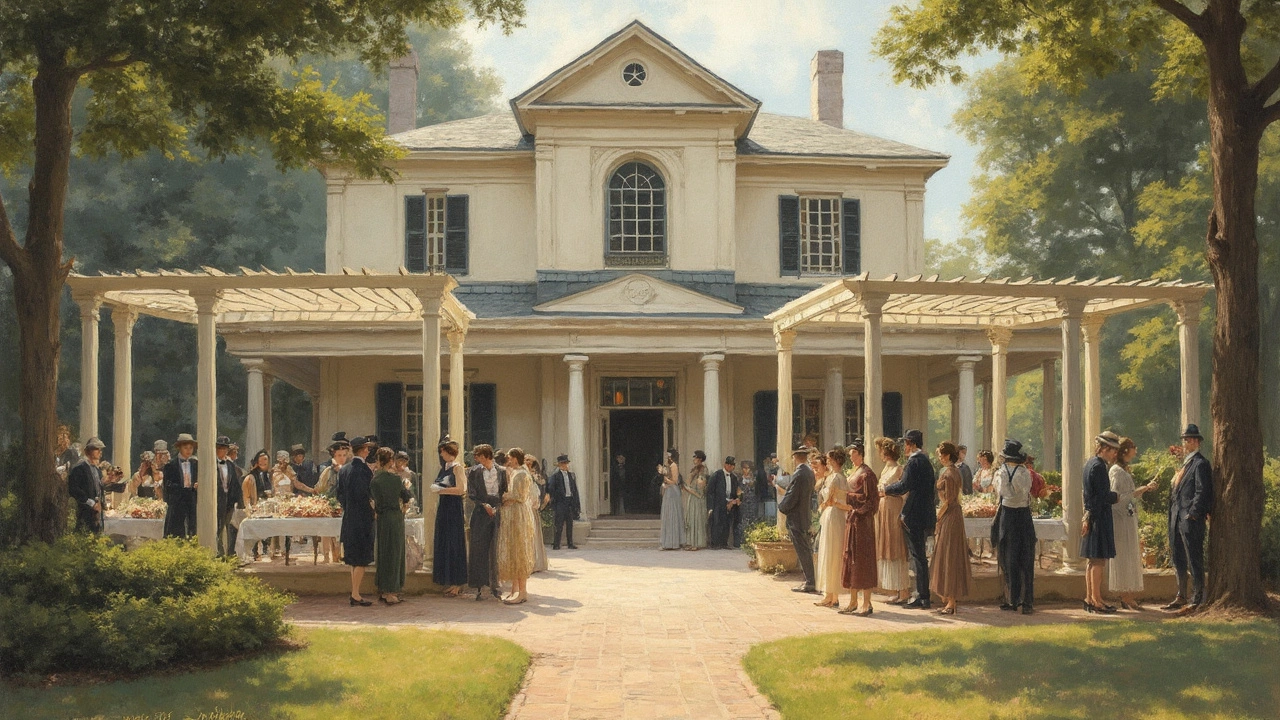
Cultural Impact and Significance
The Colonial Revival architecture wasn't just about looking back at the past; it was about shaping how Americans felt about their national identity. By drawing inspiration from colonial times, these buildings helped solidify a sense of patriotism that was particularly strong during periods of national unrest.
Now, why does this style stand out so much? Well, think about the landmarks you see in movies or on postcards. Many of them, like the historic Village Green in Massachusetts or the Governor's Palace in Virginia, owe their roots to this revival style. These buildings became backdrops for many key historical events, engraving them in memories and photographs.
"Colonial Revival architecture provided Americans with tangible relics of their own heritage, acting as physical vessels of history," notes architectural historian Vincent Scully.
Moreover, this architectural style wasn't restricted to just houses. It seeped into public buildings, banks, collegiate institutions, and even train stations, showcasing the pervasive influence on American life. This wasn't about building homes as much as it was about building a collective narrative, bringing a touch of the past into bustling modern times.
Having widespread adoption, Colonial Revival architecture also reinforced a homogenous view of American history. Critics have pointed out its role in overlooking the diverse stories of other communities and eras. Despite this, the style persisted because it touched on a universal human desire for roots and belonging.
Today, if you take a drive through suburban neighborhoods or college campuses, you can still spot this style's fingerprints. Its ongoing presence is a testament to how much Americans love a good story, especially when it’s told through porches and porticos.
Colonial Revival in Modern Times
Colonial Revival hasn't just stayed stuck in the past; it's found a new groove in the modern world. If you've recently strolled through some neighborhoods, you might’ve noticed homes that playfully mix old-school colonial elements with new, sleek designs. That's the Colonial Revival style working its magic today, still pulling at the strings of American identity.
What’s fascinating is how this style manages to keep its charm relevant. Homeowners today are weaving Colonial Revival details—like shuttered windows, chimneys centered on the roof, and brick exteriors—with modern amenities. This combo keeps the nostalgia alive but doesn’t leave you living in the 18th century. It's pretty much the peppy playlist you didn't know your Spotify needed: classic vibes with a modern twist!
An interesting trend is how these architectural designs find their way into urban areas, not just suburban neighborhoods. Builders are turning to Colonial Revival when they want that sturdy, timeless appeal without missing out on contemporary functionality.
But it’s not just house design. We see this influence in the renovations of public buildings, too. Think about famous places like the White House—the ultimate example of Colonial Revival holding its own over the years. Even as the world speeds up with high-rises and glass facades, these buildings remind us to slow down and revisit our roots.
Maybe you're thinking of sprucing up your home or just take a walk down history lane, the Colonial Revival style is one way to blend a touch of American history with modern living. After all, who doesn’t appreciate a bit of charm and character with their Wi-Fi-enabled everything?

